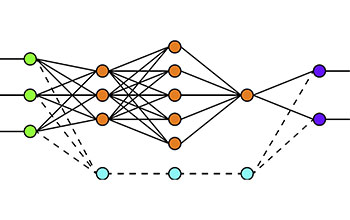NSF, Simons Foundation partner to uncover foundations of deep learning
Mathematicians, statisticians, engineers and theoretical computer scientists come together to work on deep learning and AI

Credit: Benjamin Haeffele, Johns Hopkins University
Automated systems, designed to simplify our lives, are everywhere. From customer service chatbots to self-driving cars, artificial intelligence and related technologies continue to propel us forward at an ever-increasing pace. Now, the U.S. National Science Foundation and the Simons Foundation Division of Mathematics and Physical Sciences have partnered to fund research through the Mathematical and Scientific Foundations of Deep Learning, or MoDL, program. The interdisciplinary projects seek to understand and develop the theoretical foundations for deep learning networks. Deep Learning is part of a broader family of machine-learning methods that uses artificial neural networks to digest large amounts of raw data inputs and train AI systems without direct human supervision.
"NSF and our partners at the Simons Foundation recognize the importance of discovering the mechanisms by which deep learning algorithms work," says Juan Meza, Director of the Division of Mathematical Sciences at NSF. "By understanding the limits of these networks, we can push them to the next level."
Each team is receiving a total of $10 million over the next five years.
- The Collaboration on the Theoretical Foundations of Deep Learning is led by the University of California, Berkeley. Seven additional academic partners, including two international collaborators, make up a team that aims to study the mathematical mechanisms that underpin the practical success of deep learning; explain the limitations of current methods; and expand the accuracy and applicability of deep learning systems.
- The Transferable, Hierarchical, Expressive, Optimal, Robust, Interpretable NETworks (THEORINET) is led by Johns Hopkins University. With four additional collaborating institutions, THEORINET seeks to analyze properties of deep neural networks; develop robust learning algorithms; uncover new architectures for complex data; and design new representations suitable for transferring to multiple tasks.
Complementing NSF's National Artificial Intelligence Research Institutes, the MoDL program supports collaborations between mathematicians, statisticians, electrical engineers and theoretical computer scientists. In addition to ambitious research projects, the program will train students, host workshops and summer schools, and provide open access to results. As the need for data scientists grows, the benefits of programs like this one become clear. The interdisciplinary focus will build mathematical foundations and advance the understanding of deep learning and AI and enable the national workforce.
Media Contacts
Media Affairs, NSF, (703) 292-7090, media@nsf.gov


